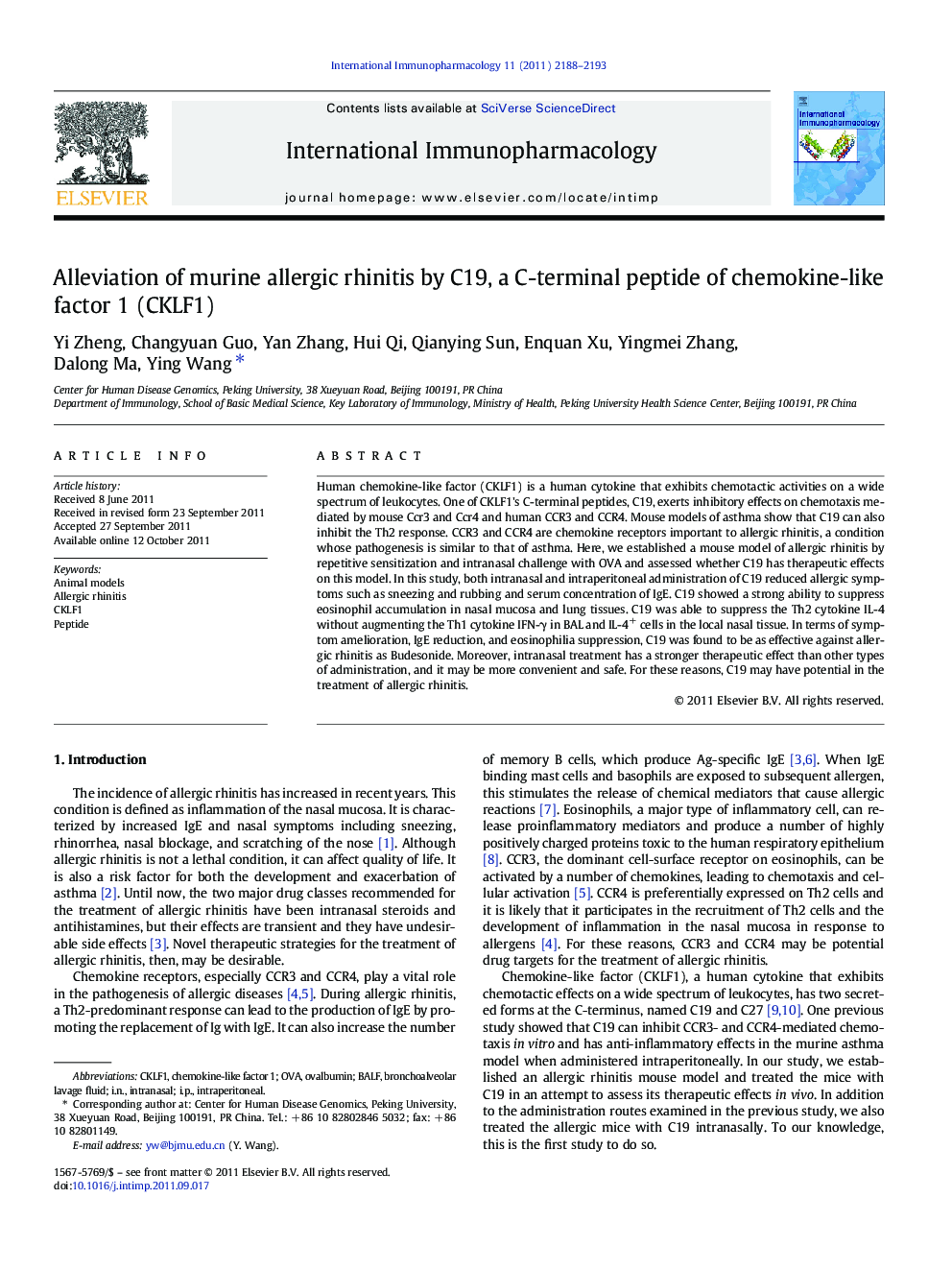| کد مقاله | کد نشریه | سال انتشار | مقاله انگلیسی | نسخه تمام متن |
|---|---|---|---|---|
| 5834247 | 1122667 | 2011 | 6 صفحه PDF | دانلود رایگان |

Human chemokine-like factor (CKLF1) is a human cytokine that exhibits chemotactic activities on a wide spectrum of leukocytes. One of CKLF1's C-terminal peptides, C19, exerts inhibitory effects on chemotaxis mediated by mouse Ccr3 and Ccr4 and human CCR3 and CCR4. Mouse models of asthma show that C19 can also inhibit the Th2 response. CCR3 and CCR4 are chemokine receptors important to allergic rhinitis, a condition whose pathogenesis is similar to that of asthma. Here, we established a mouse model of allergic rhinitis by repetitive sensitization and intranasal challenge with OVA and assessed whether C19 has therapeutic effects on this model. In this study, both intranasal and intraperitoneal administration of C19 reduced allergic symptoms such as sneezing and rubbing and serum concentration of IgE. C19 showed a strong ability to suppress eosinophil accumulation in nasal mucosa and lung tissues. C19 was able to suppress the Th2 cytokine IL-4 without augmenting the Th1 cytokine IFN-γ in BAL and IL-4+ cells in the local nasal tissue. In terms of symptom amelioration, IgE reduction, and eosinophilia suppression, C19 was found to be as effective against allergic rhinitis as Budesonide. Moreover, intranasal treatment has a stronger therapeutic effect than other types of administration, and it may be more convenient and safe. For these reasons, C19 may have potential in the treatment of allergic rhinitis.
⺠CKLF1's C-terminal peptide C19 can ameliorate allergic symptoms in a murine model. ⺠C19 can reduce serum IgE and IL-4 level in bronchoalveolar lavage fluid. ⺠C19 can suppress airway eosinophilia locally. ⺠Intranasal administration of C19 is an effective way in allergic rhinitis therapy.
Journal: International Immunopharmacology - Volume 11, Issue 12, December 2011, Pages 2188-2193